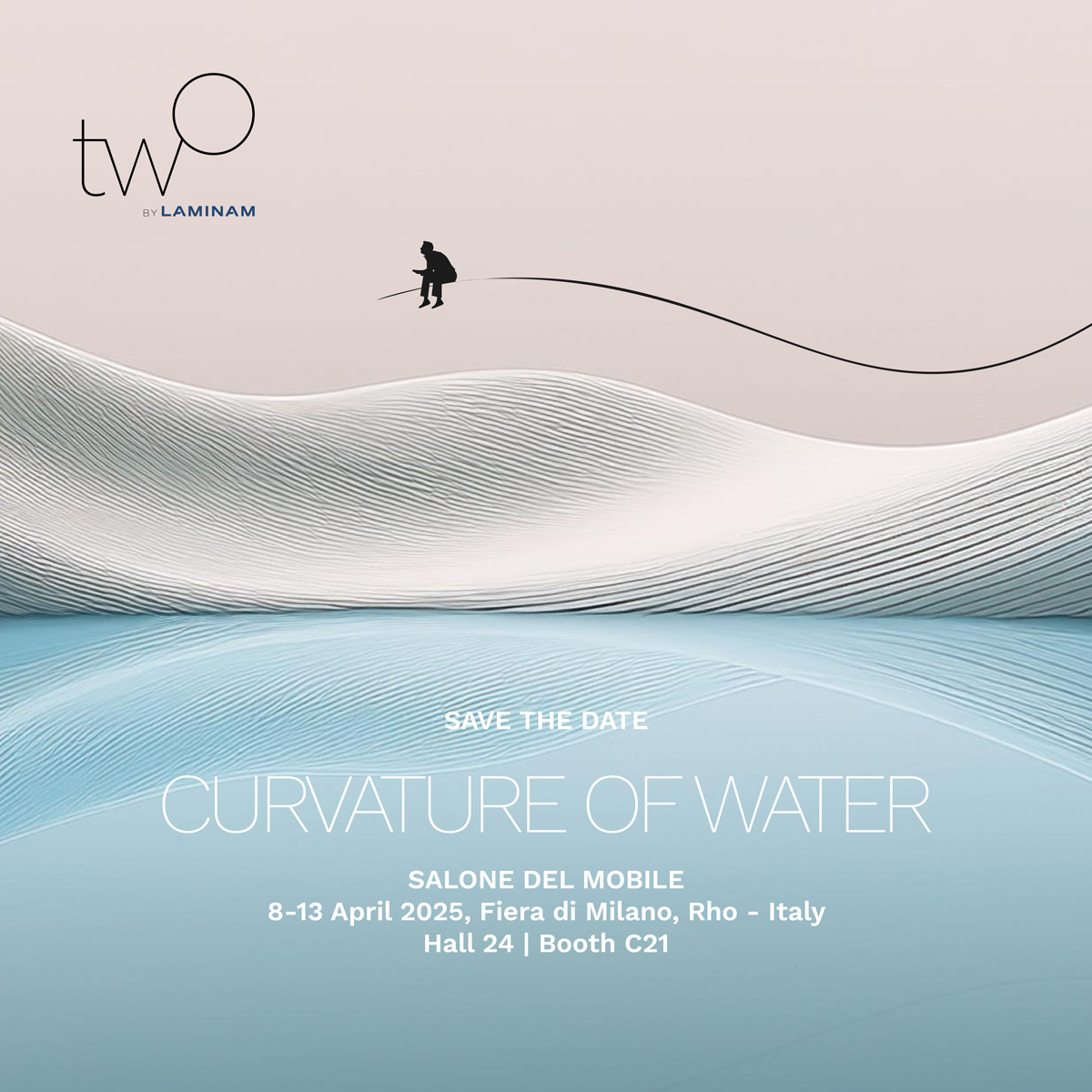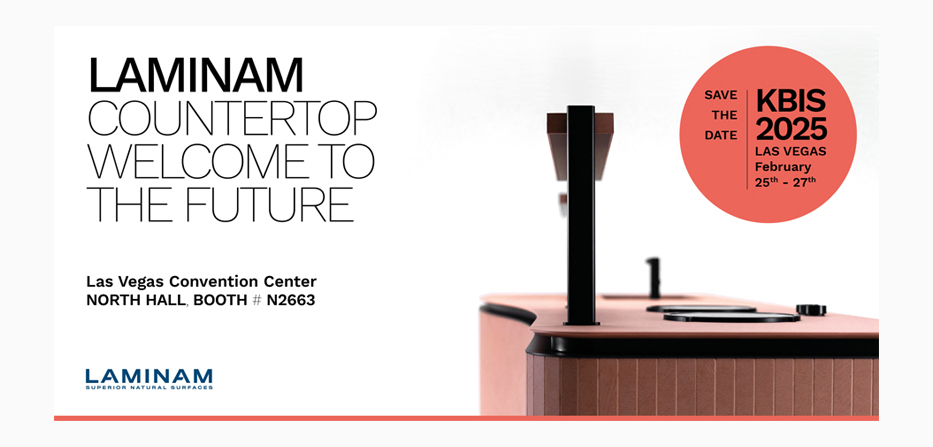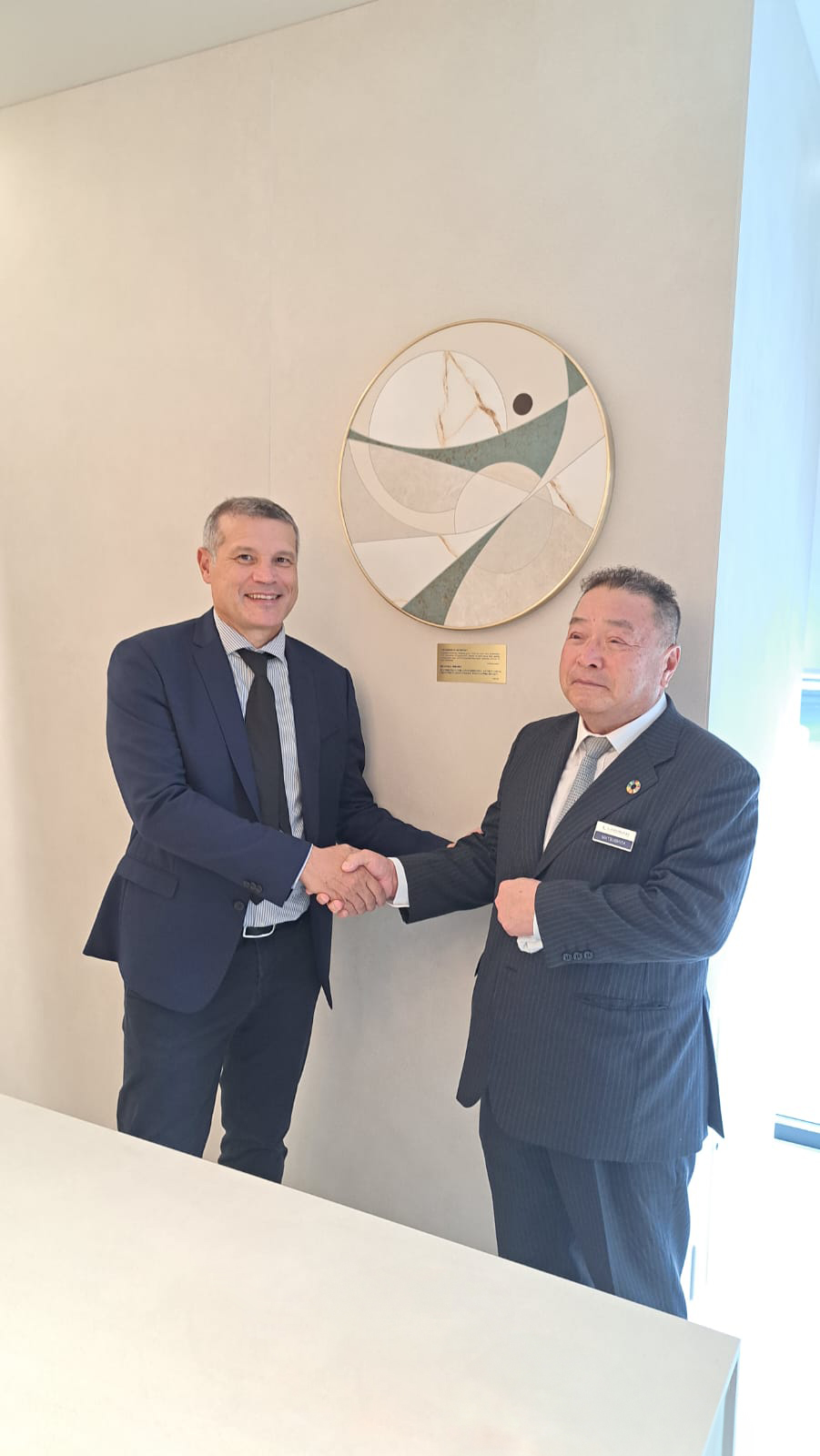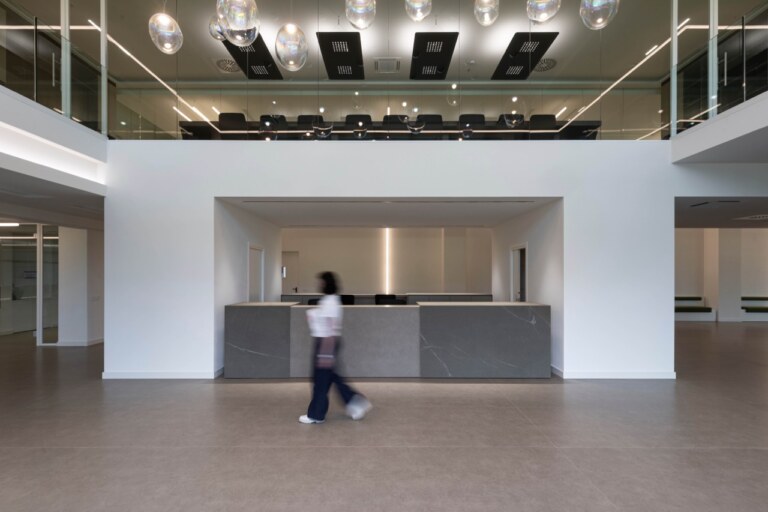
As we experience a cultural revolution in the way we work, we began to wonder how the architecture of workspaces is evolving.
What changes, what innovations, and—most importantly—what goals should the design of professional environments focus on?
We posed these questions to Nicola Iaccheri, Key Account Architecture Supervisor at Laminam.
1 – In recent years, technological innovation and the emergence of new working methods such as remote or hybrid working have significantly changed the lifestyles of many professionals: residential spaces have been reorganized as well as offices. How can the design of workspaces identify and satisfy the requirements imposed by this revolution?
A clear trend has developed in interior design which aims to create more flexible and dynamic spaces, setting aside (where possible) the concept of fixed workstations, but naturally without neglecting the need for meeting areas and phone booths for private calls. There is also increasing focus on social spaces, with the goal of fostering a more welcoming work environment.
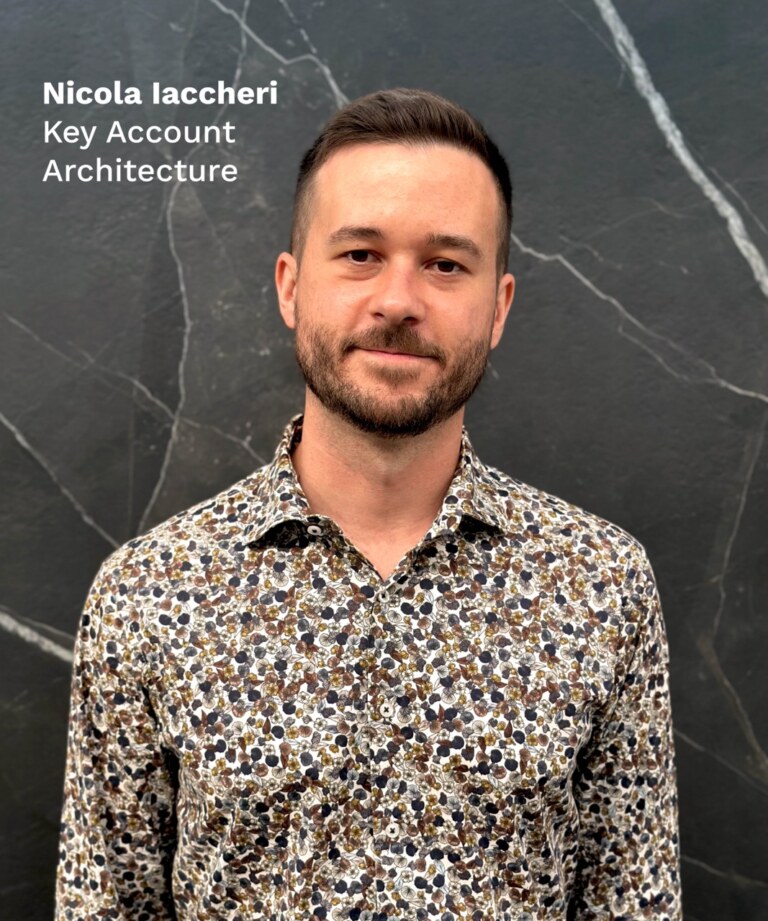
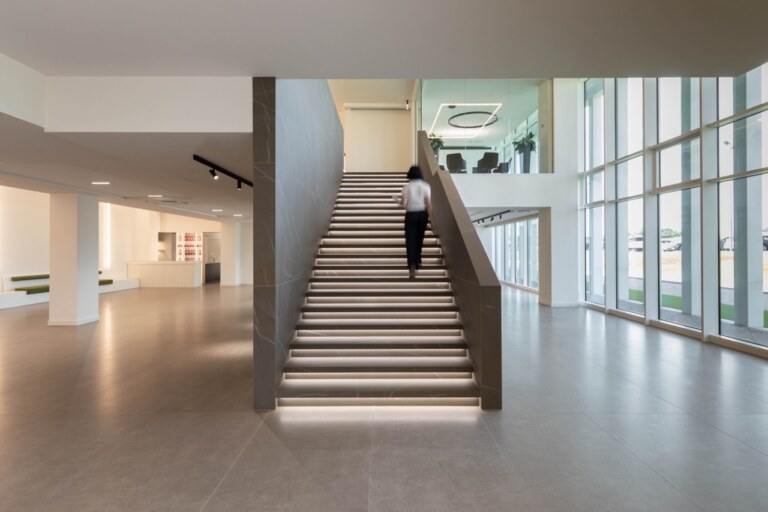
2 – In an article in the New York Times, architect Carlo Ratti writes that “26 Empire State Buildings could fit into New York’s empty office space”, commenting on ever-more widespread trends in work timeframes, methods, and organization. How can workspaces become appealing for their “inhabitants” once again?
Today’s offices are undoubtedly more refined, with high-quality furnishings and finishes which improve the aesthetics and comfort. The focus has therefore moved to user well-being, with spaces organized in a functional and useful manner to meet the range of working needs and requirements.
These “premium” spaces are designed to make the office experience more pleasurable, encouraging concentration and reducing stress. Ultimately, contemporary offices are not just workspaces, but places which improve workers’ quality of life, making the professional environment a place where it is pleasant to spend time and where people can work to the best of their capacities.
3 – Employee interactions and permeability of spaces seem to be the bases of modern workspaces, offering greater flexibility and adaptability for all. What type of space is therefore favored to provide open-plan spaces for working together, but also private areas for concentrating alone, as well as areas dedicated to relaxation and socialization?
The current trend when designing workspaces favors open environments which can be rejigged as required, an approach which eliminates closed offices and fixed workstations, allowing workers to freely choose where to perform their day-to-day activities. Flexibility of spaces allows for rapid adaptation to the changing needs and requirements of both company and employees, promoting a dynamic and collaborative work environment. The integration of spaces for relaxation and social interactions within offices has become an essential component of modern design. These spaces, such as lounge areas, shared kitchens, and coffee areas, give employees the chance to unwind for a moment, socialize, and recharge their batteries.
For activities requiring a greater level of privacy, there are plenty of peaceful, design-friendly spaces (such as phone booths), where employees can concentrate without interruptions and be guaranteed the necessary privacy.
4 – According to renowned Danish architect Bjarke Ingels, sustainability is not a trend, but rather a necessity. He believes we need to design workspaces which respect the planet and improve workers’ quality of life. How do Laminam surfaces contribute to the well-being of workers and the health of our planet?
Using Laminam surfaces, manufactured with natural and recyclable raw materials, represents an informed and sustainable choice which goes beyond mere aesthetics. Produced with a particular focus on the environment, our collections help create visually appealing workspaces which are also environmentally responsible. Laminam surfaces, with their superior quality and elegant finishes, transform any environment into a pleasant living space with a premium feel. Highly versatile, they can be used for an enormous range of different design requirements, creating an aesthetic harmony which enhances each and every detail in the interior design.
5 – What direction is research heading in, and what are the most common requests from architects and customers?
Research in the field of interior design and architecture is increasingly focusing on the use of sustainable, long-lasting materials, with the goal of creating spaces which are not only functional, but also environmentally responsible. This trend responds to the growing awareness of the importance of reducing environmental impacts and promoting more sustainable practices in the construction sector. The materials chosen need not only to be recyclable with a low environmental impact, but also tough and long lasting. At the same time, there is a strong drive to make working environments ever-increasingly like domestic ones, creating spaces which are welcoming, comfortable, and stimulating. This transformation aims at improving employees’ well-being, increasing their productivity and satisfaction. Incorporating elements more typical of homes, such as ergonomic furniture, warm and natural finishes, and spaces for relaxing and socializing, helps create a more familiar and less formal atmosphere.
6 – The workspace of the future in brief?
The workspace of the future will be open, welcoming and worker-friendly, promoting collaboration, well-being and productivity through spaces which are flexible and comfortable for all.
